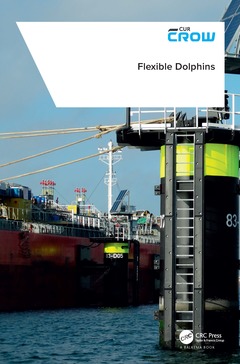Flexible Dolphins
Coordonnateur : Crow

Millions of breasting and mooring dolphins have been installed in inland waterways adjacent to jetties and waiting facilities for ship-to-ship transhipment or as crash barriers in commercial port areas throughout the world. A dolphin is a marine structure that is frequently installed in ports, waterways and other places related to marine traffic. Dolphins are typically located adjacent to waterfront structures such as quay walls, jetties, locks and bridge piers. The purpose of a dolphin is threefold:
- Allow ships to berth and moor safely and efficiently
- Protect waterfront structures by acting as a crash barrier and sacrificial structure
- Direct and guide marine traffic by acting as a lead-in dolphin and navigation aid
The main objective of this handbook is to provide engineers, asset managers, suppliers, tender teams, contractors and principals with such guidance on the design and construction of flexible dolphins by collecting and describing knowledge of and experience with these flexible marine structures.This handbook is intended to prevent extensive discussions during the design and construction stages of projects involving flexible dolphins. It is part of a series of Dutch port infrastructure design recommendations that include the Quay Walls handbook and Jetties and Wharfs handbook.
1 Introduction
1.1 History of flexible dolphins
1.2 Guidance for the reader
1.3 References
2 Types of dolphins
2.1 Functions and main types of dolphins
2.2 Gravity-based dolphins
2.3 Fixed dolphins with raked piles
2.4 Flexible piled dolphins
2.5 Floating structures
2.6 References
3 Design aspects and methods
3.1 Lateral soil resistance
3.2 Lateral soil stiffness
3.3 Wall friction and vertical equilibrium
3.4 Bed levels
3.5 Specials
3.6 Dolphin loads
3.7 Dolphin structures
3.8 Local buckling
3.9 Materials used
3.10 Safety philosophy
3.11 References
4 Evaluation of design methods
4.1 Introduction
4.2 Description of the case studies
4.3 Design considerations
4.4 Comparison of soil behaviour
4.5 Comparison of safety philosophy
4.6 Evaluation of design approach
4.7 References
5 Special design conditions for dolphins
5.1 Literature survey
5.2 Verification by tests and calculations
5.3 Conclusions and recommendations
5.4 References
6 Design approach for flexible dolphin design
6.1 Introduction
6.2 Step-by-step design approach
6.3 References
7 Construction aspects
7.1 From design to construction
7.2 Construction engineering and procurement
7.3 Fabrication
7.4 Installation
7.5 Points of attention
7.6 Decommissioning
7.7 Dolphin construction pictures
7.8 References
8 Furnishing flexible dolphins
8.1 Introduction
8.2 Height of dolphins
8.3 Quick release hooks (QRHs)
8.4 Head bollards
8.5 Bollard arms
8.6 Lighting/Illumination
8.7 Platforms
8.8 Handrail and rope protector
8.9 Fendering
8.10 Ladders
8.11 Corrosion protection
8.12 Nautical provisions
8.13 Power source/supply
8.14 References
9 Sustainability
9.1 Introduction
9.2 The underlying policy
9.3 Minimum criteria for sustainability
9.4 Green Deal Sustainable Civil Infrastructure (Green Deal Duurzaam GWW)
9.5 DuboCalc in relation to tendering and sustainable design
9.6 Life cycle analysis (LCA)
10 Lessons Learned
10.1 Buckling near the harbour bottom and wall thickness transitions
10.2 Lessons learned concerning repair works with regard to buckling
10.3 Damage to pile tip during installation
10.4 Measures for preventing damage due to pile driving
10.5 References
Appendix 1 Full-scale field test of laterally loaded tubular piles
Appendix 2 Risk based reliability differentiation
Appendix 3 Design aspects
Appendix 4 PLAXIS 3D calculations
Appendix 5 Design procedure for breasting dolphins with fender systems
Appendix 6 Example calculation methods
CROW devises smart, practical solutions for issues pertaining to infrastructure, public space, traffic and transport in the Netherlands in conjunction with external professionals who share knowledge with one another and make it utilizable in practice. CROW is an independent, non-profit research organization investing in knowledge for now and the future. Striving towards the best solutions for issues ranging from policy to managing infrastructure, public space, traffic and transport, and work and safety. Furthermore, CROW is expert in outsourcing and contracting.
Date de parution : 09-2021
21x29.7 cm
Disponible chez l'éditeur (délai d'approvisionnement : 13 jours).
Prix indicatif 277,77 €
Ajouter au panier


